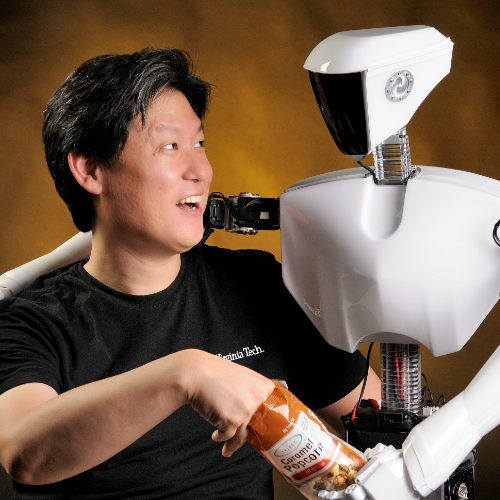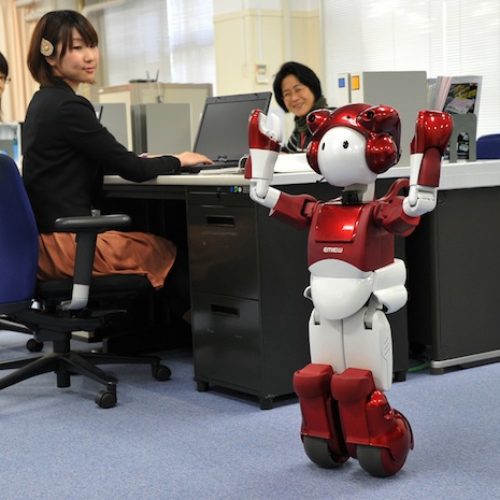Robots That Can Read Minds
It seems that robots that can read minds are already being developed by the Massachusetts Institute of Technology’s Computer Science and Artificial Intelligence Laboratory.
A system has been devised where a robot, that they have named Baxter, was able to collaborate on a multiple choice test using nothing but brain waves. The team strapped a brain signal-sensing helmet to a person’s head and then had that person command Baxter with their mind. The helmet detects signals known as ‘error-related potentials’ or ErrPs for short. Baxter senses the ErrPs and then waits for a hand motion to direct it.
This technology is in its very early stages, but the potential uses for it are endless. One of the students working on the project has said “Right now when we want to work with robots or with our tech there’s a sort of language barrier, where we need to adapt the robot. We need to learn its language, we need to learn keywords use controls, buttons, or learn to programme but we would like to be able to interact with robots more similarly with how we interact with other people”
The Advantages Of Robots That Can Read Minds
As it progresses further, this technology could mean that there will be no need to speak to helper robots at all. They will just be able to read our minds and act accordingly.
There are some people who find the idea of robots that can read minds very frightening and they think that in the wrong hands it could be used in various ways to cause harm. In the right hands though, the potential uses are amazing. It could be used in the care industry, for instance, or in construction or retail. The person in control could stop a robot from making a mistake and get it back on track very quickly.
There could be so many advantages when this system is fully developed for it to work in areas that are very noisy, such as factories, where it is dark or with people that have are immobile or can’t speak.
MIT have carried out more than 1000 tests using 7 volunteers. Each user had to direct a robot towards one of three targets. When the robot was heading for the wrong one the users ErrPs halted them, and then with a movement of their wrist, they directed to bot to the right one. 70% of the time the robots headed for the right target straightaway, but with the brainwave signals from the volunteers, the rose to a success rate of 97%.
For it to be really useful though, the developers will have to find a cheaper and more comfortable headset for users to wear as the current ones available are cumbersome and not too comfortable at all.
You might also like
Charli
CHARLI is the United States’ first full-size autonomous 5-foot tall humanoid created at Virginia Tech. The term humanoid means that the robot was built to mimic the human body and
Hitachi EMIEW
First unveiled in 2007, Hitachi’s adorable little service robot EMIEW 2 has been gradually improving over the years. Standing 80 centimeters tall and weighing 14 kilograms, the robot is rather
Could You Assemble An IKEA Chair In 20 Minutes – Robots Can
Assembling a piece of furniture from IKEA is being used as a benchmark for the dexterity of their robots by researchers at Nanyang Technological University in Singapore. They say that



